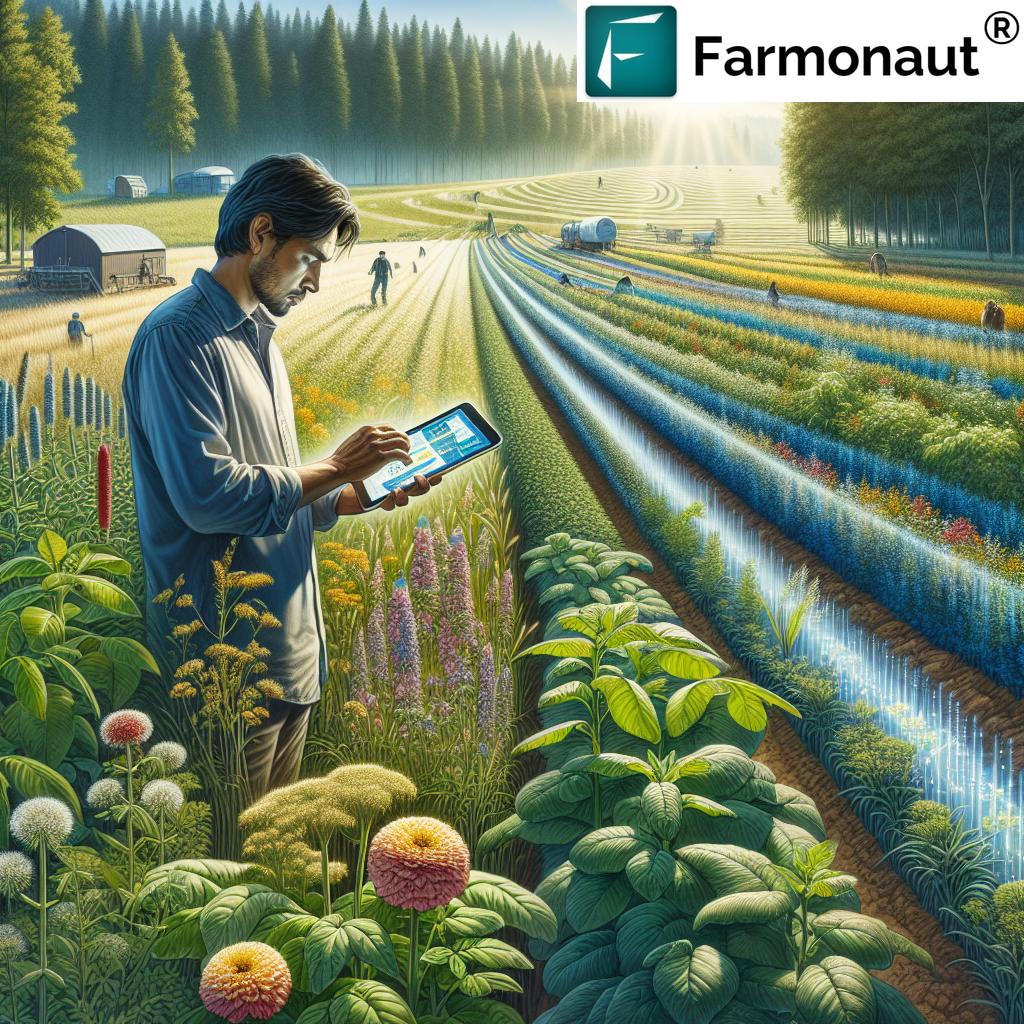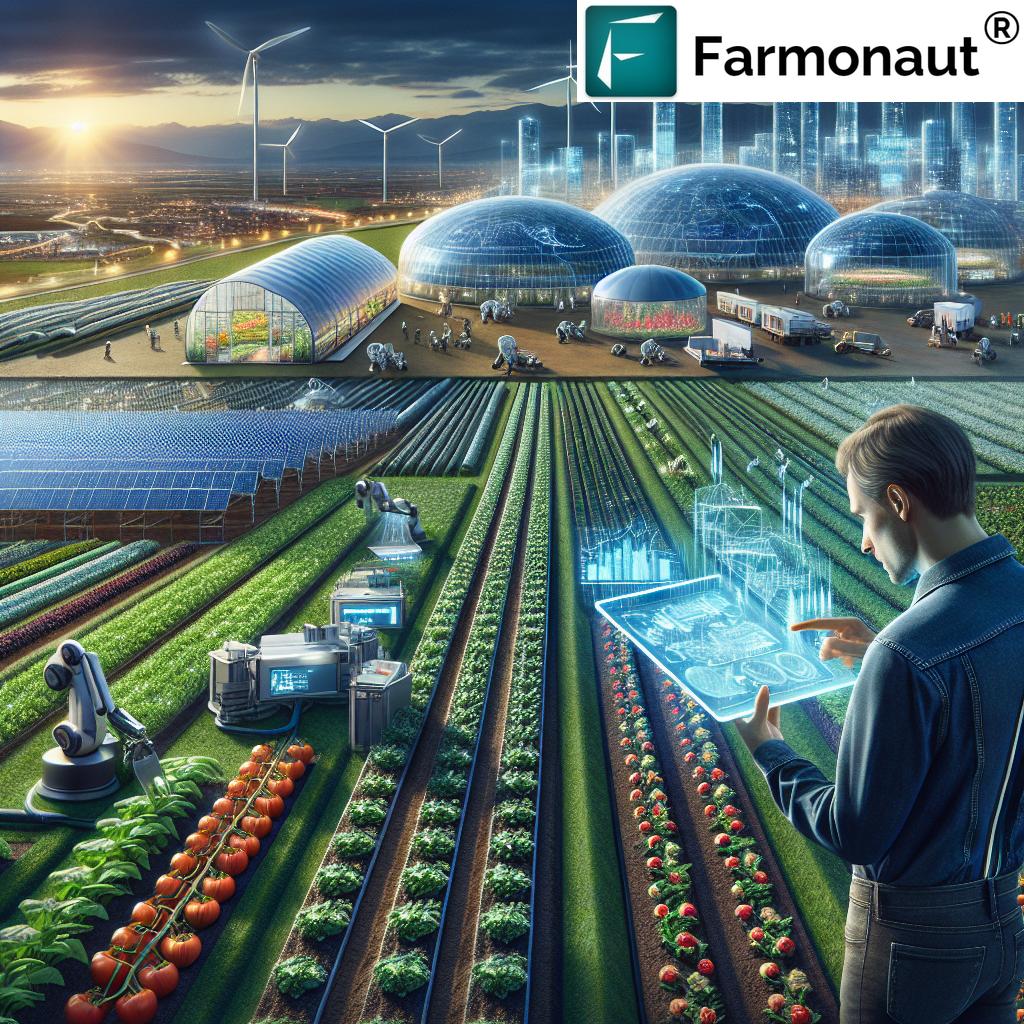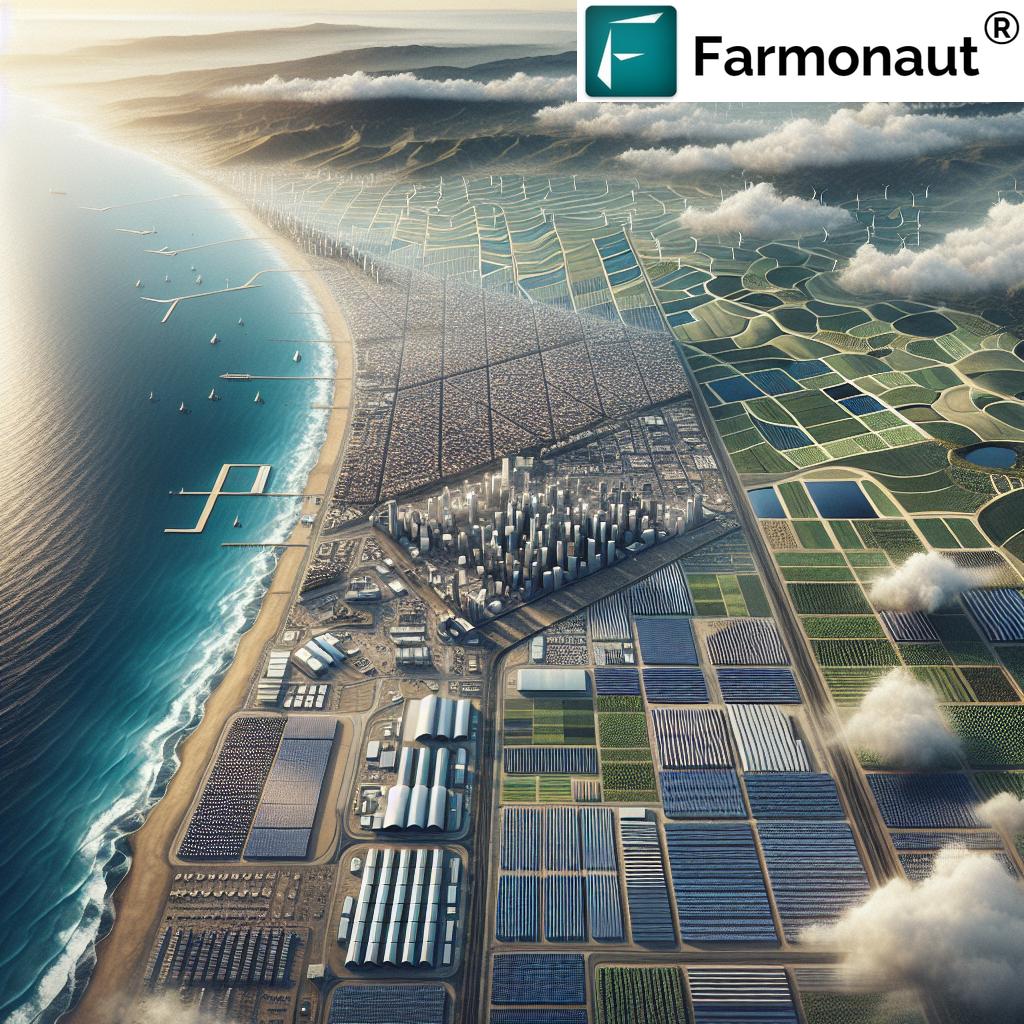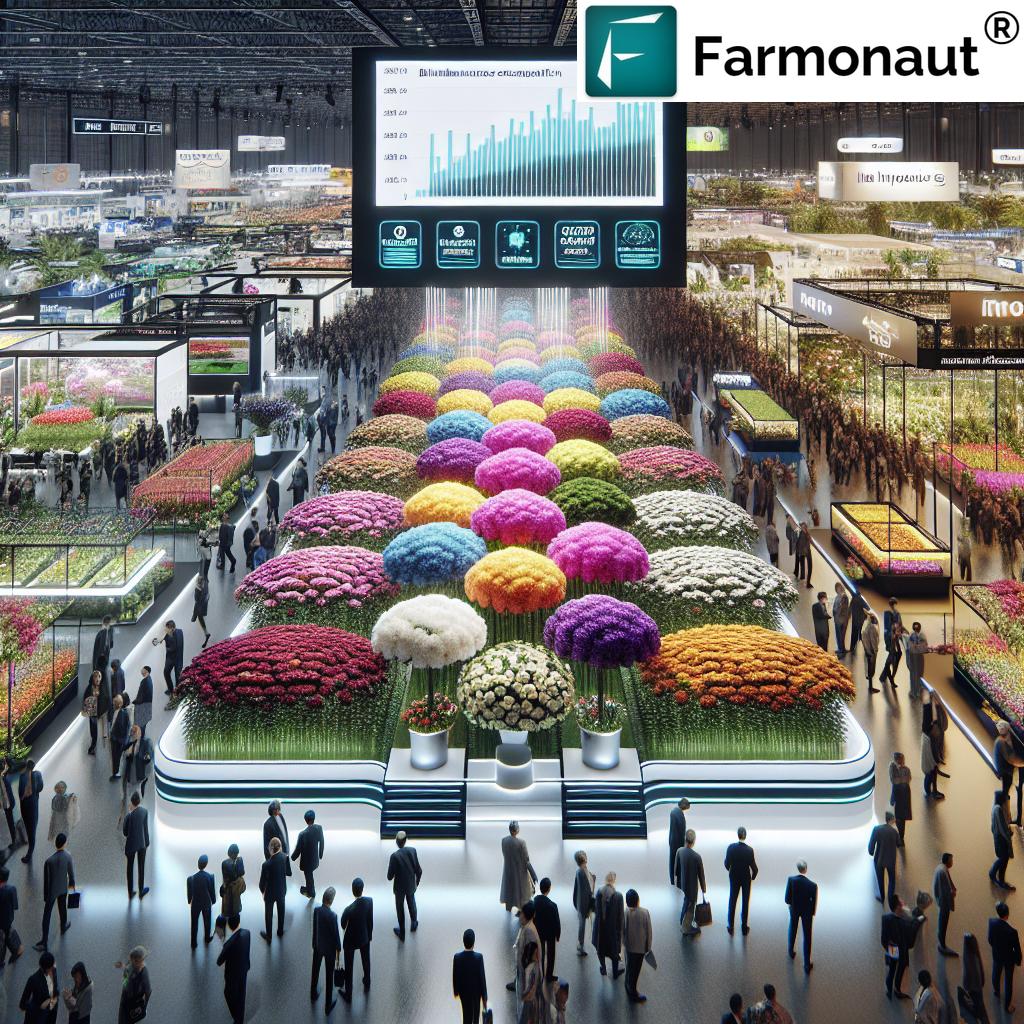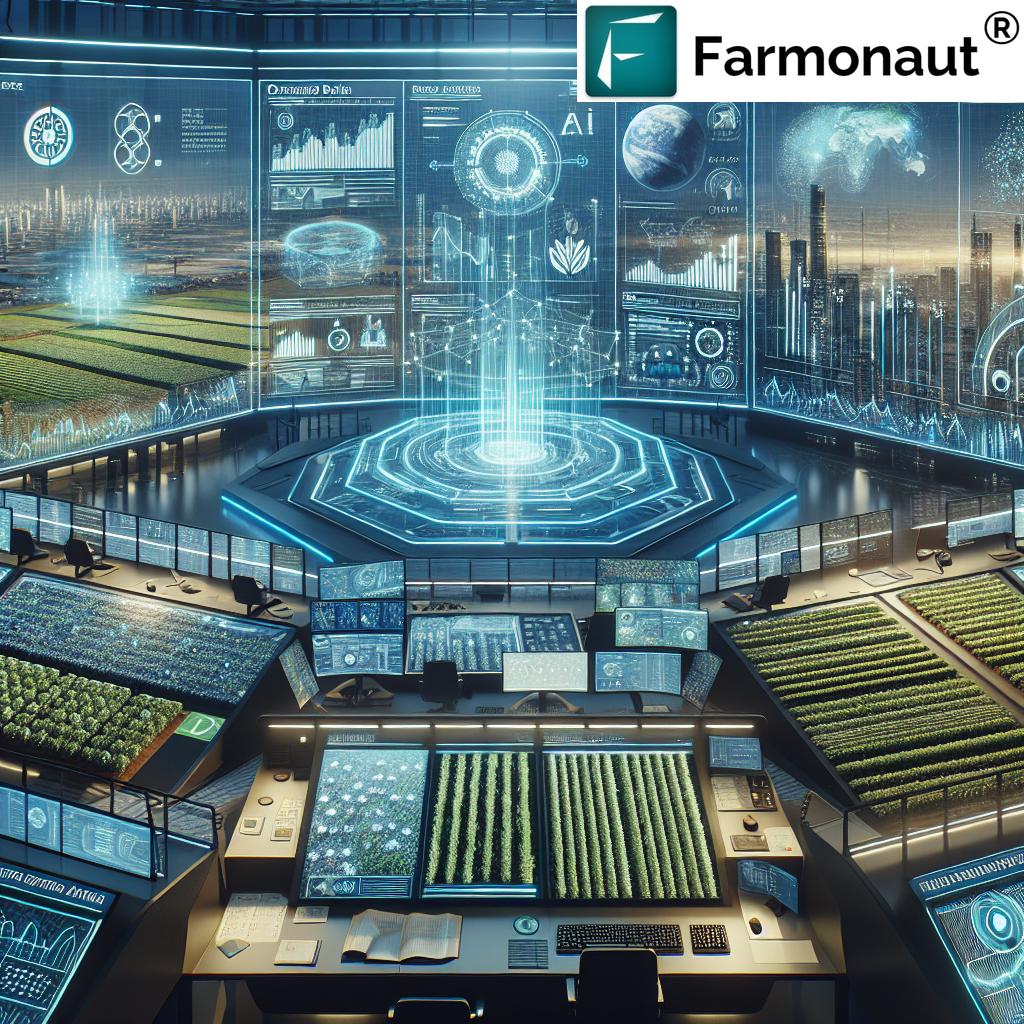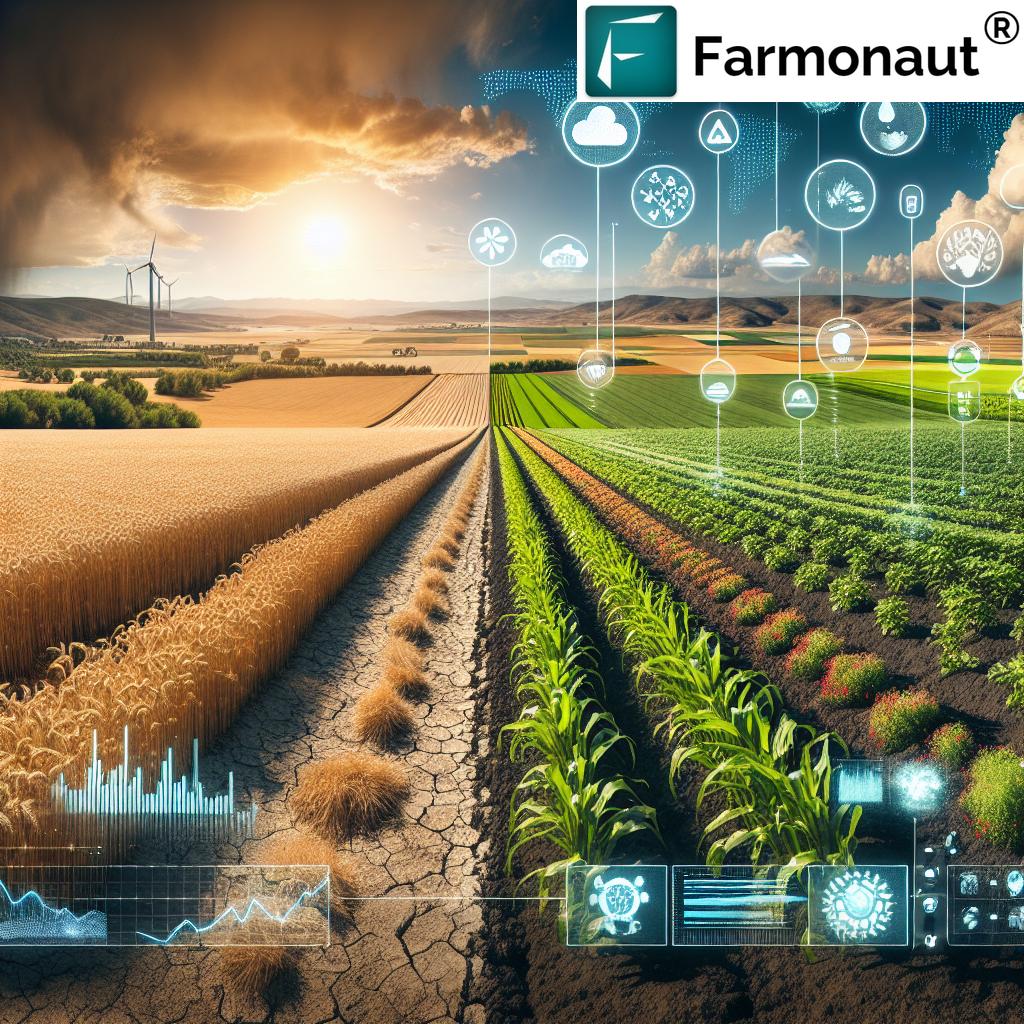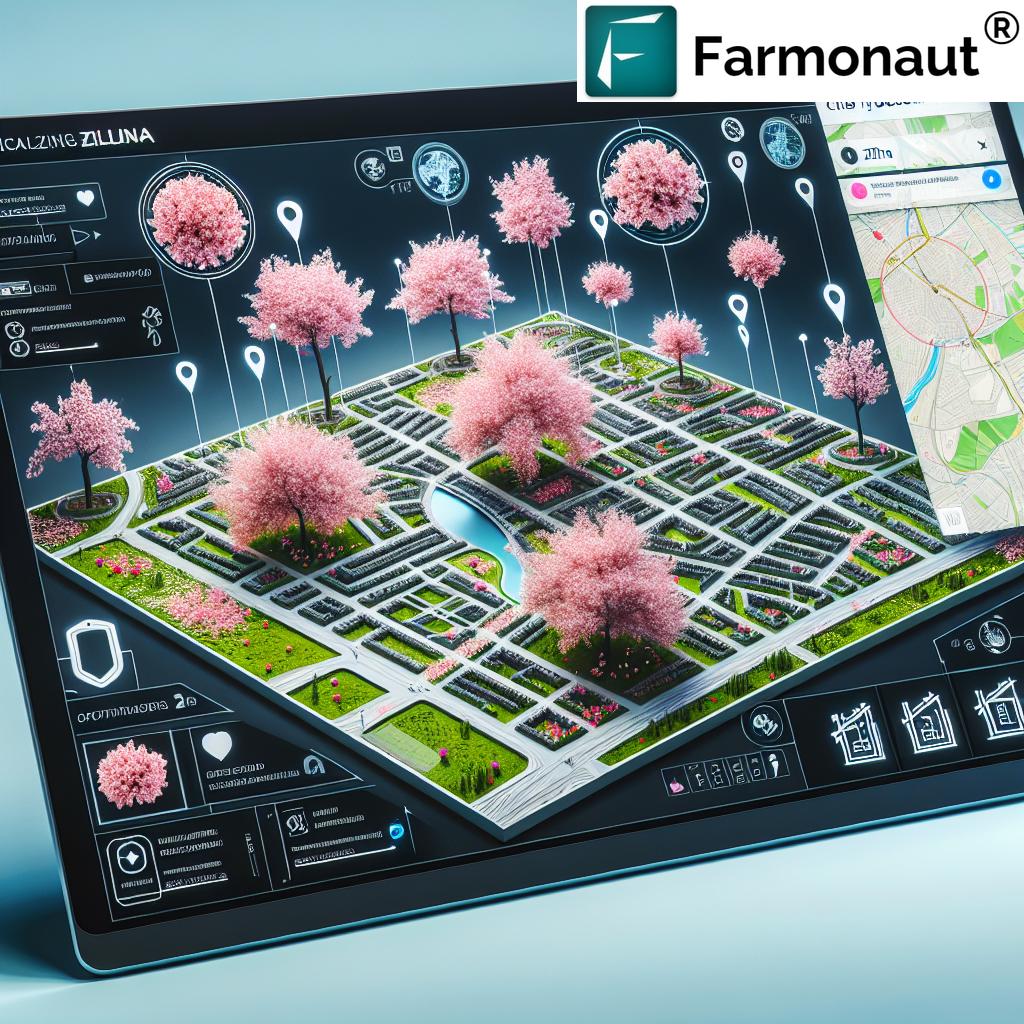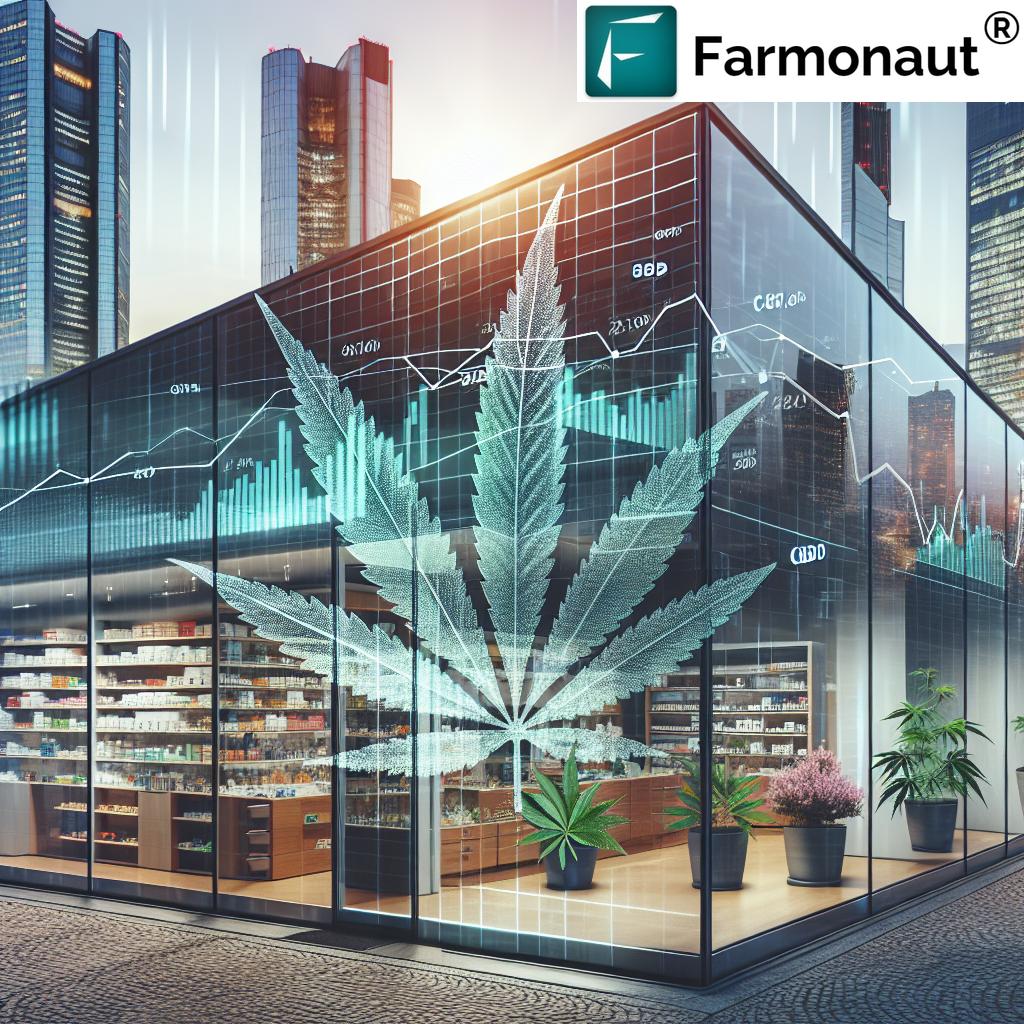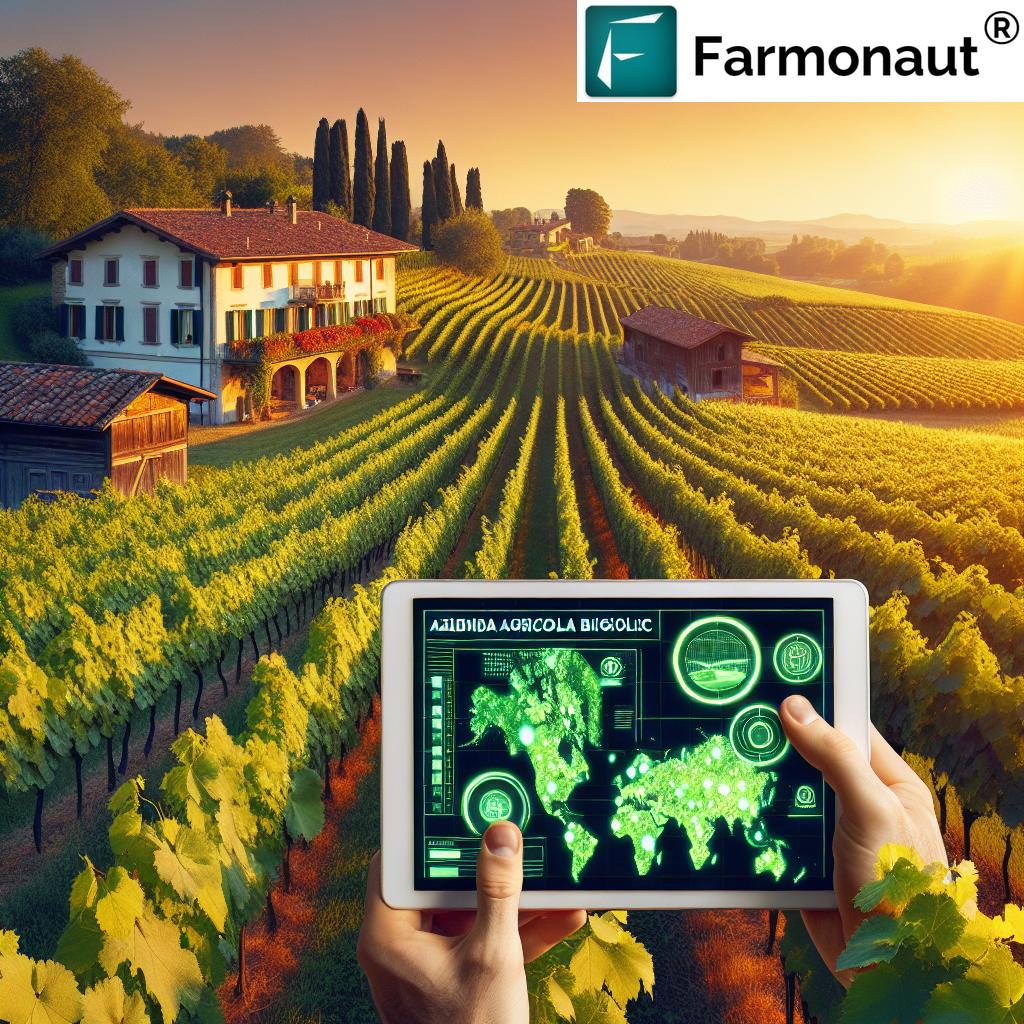Europe Farming: 7 Shocking Innovations Changing Agriculture
“Over 40% of EU farmland now uses sustainable practices, boosting biodiversity and soil health across Europe.”
Agriculture, farming, and forestry are deeply woven into Europe’s economic fabric, environmental health, and rich cultural heritage. Our continent’s landscapes – stretching from the sun-drenched orchards of Spain to the dense, misty forests of Northern Europe – have spawned a remarkable diversity of agricultural practices and forest ecosystems.
As we journey through this vast tapestry, we explore the state of agriculture and forestry in Europe, sustainable agricultural practices, threats of climate change, digitalization transforming our fields, and, most intriguingly, 7 shocking innovations that are upending the traditional narrative and shaping the future of agriculture in Europe.
Current State of Agriculture in Europe: Workforce, Economics & Diverse Landscapes
Today, European agriculture employs approximately 8.6 million people—a vital 4.2% of the EU’s workforce. When we include part-time and seasonal workers, this figure actually swells to nearly 17 million (source: euronews.com).
Our European fields stretch across diverse regions—from the rolling wheat plains of France to the olive groves of Greece, encapsulating hundreds of local climates and micro-ecosystems. This diversity, while an immense strength, also ushers in complex challenges: declining labor force, rising costs, urbanization, and a rapidly aging farmer population.
Agriculture in Europe remains a cornerstone of the continent’s economy, culture, and identity. Yet, as we will see, the sector’s future increasingly relies on sustainability, smart innovation, and collaborative policy—especially through mechanisms like the Common Agricultural Policy.
Land Use, Risk of Abandonment, and the Impact of Urbanization
- The EU spans some of the world’s richest agricultural areas, yet about 30% of agricultural land is now at risk of abandonment by 2030 (eea.europa.eu).
- Such abandonment is driven by urbanization, aging farmer populations, and economic pressures, which necessitate renewed commitment to sustainability and income support.
Why Agriculture Still Matters Across Europe
- Directly supports food security for almost 450 million people
- Cushions rural economies and preserves historic cultural landscapes
- Acts as a frontline defense against biodiversity loss and ecosystem degradation
- Shapes the daily lives and future prospects of both seasonal workers and the broader labor force
How the Common Agricultural Policy (CAP) Shapes Our Food Systems and Rural Development
Since 1962, the Common Agricultural Policy has stood as the backbone of agricultural policy across Europe. Currently, the CAP’s budget for 2023-2027 is a remarkable €264 billion, channeling resources into income support and rural development.
- Its goals include fair income for farmers, market stability, affordable food prices, and robust rural communities.
- Significant CAP reforms now prioritize sustainable agriculture in Europe, climate action, reduced pesticide use, and support for organic farming.
CAP is also responding to emerging threats with new initiatives aimed at increasing environmental stewardship, enhancing biodiversity, and preparing farms for a climate-resilient future.
As EU citizens, we share both the legacy and the responsibility that CAP embodies—using policy as a lever for more resilient, environmentally sound agricultural practices.
Forestry in the EU: Trees, Biodiversity & Climate Challenges
Forests are the lungs of our continent. Approximately 45% of European land area is cloaked in forests, making Europe one of the world’s most densely forested regions (environment.ec.europa.eu).
These landscapes provide:
- Vital ecosystem services: carbon sequestration, water purification, and wildlife habitat
- Sanctuaries of biodiversity, home to centuries-old tree species
- Massive carbon sinks, crucial to fighting climate change and balancing the agricultural carbon footprint
However, alarming research suggests that up to one-third of European tree species may struggle to adapt to global warming by 2100 (lemonde.fr). Threats include pests, diseases, drought, and changing weather patterns.
- The EU’s pledge to plant 3 billion new trees by 2030 is a bold response, aiming to bolster biodiversity in European forests and increase resilience.
Why European Forests Matter…
European forests regulate climate, anchor ecosystem services, and are central to our shared cultural heritage. Their future depends on innovative models for sustainability, restoration, and science-backed resource management.
- Forests act as a buffer against climate extremities, reduce flood risks, and preserve vital habitat for plant and animal species.
- The health of forests is directly tied to the success of both European farming practices and food security.
The Future of Agriculture in Europe: Challenges and Opportunities
Looking ahead, the clock is ticking for European agriculture and forestry sectors.
- Climate change and agriculture: More frequent droughts, shifting seasons, and unexpected weather threaten yields, disrupt water cycles, and endanger rural livelihoods.
- Ongoing biodiversity loss: Land conversion, monocultures, and chemical overuse take their toll, while pollinator populations decline.
- Economic pressures: Price volatility and rising input costs squeeze both small family farms and larger agribusinesses.
- Aging farmer populations and labor shortages: The average European farmer is now over 50 years old, and succession rates are dropping.
But innovation is driving a powerful transformation. The European Commission’s Vision for Agriculture and Food (2025) and the European Green Deal agriculture strategy are rallying farmers, scientists, and technologists to reimagine what is possible.
Key EU Sustainability Initiatives
- Farm to Fork strategy: Calls for digitalization in farming, increased organic area, and a 50% reduction in pesticide use by 2030
- Renewable energy integration on farms and agroforestry lands
- Large-scale tree planting and ecosystem restoration to boost carbon sequestration
Europe Farming: 7 Shocking Innovations Changing Agriculture
Our continent is rapidly evolving—with precision farming innovations, digital advisory, and environmental monitoring driving the future of farming. Let’s explore the seven most disruptive advances—each propelling Europe toward resilience, sustainability, and food security.
-
1. Precision Farming & Satellite-Based Crop Health Monitoring
- Advanced remote sensing and AI tools (such as those integrated by Farmonaut) now deliver real-time vegetation health data (NDVI, soil moisture, and crop growth mapping) to farmers’ mobile devices, web platforms, or enterprise dashboards.
- This enables precise irrigation, fertilizer management, and targeted pesticide application—drastically reducing resource waste and environmental impact.
- Impact: Up to 25% water savings and 15% higher crop yields in pilot adopters across France, Spain, and Germany.
- Use in EU: Precision farming is being implemented in over 18 countries, transforming diverse agricultural areas from the Po Valley to the Hungarian plains.
-
2. Drone Surveillance and Automated Crop Monitoring
- Drones equipped with multispectral and thermal cameras are now scanning vast agricultural fields in minutes, spotting disease or pest breakouts before they spread.
- In Ireland, Italy, and Denmark, drone surveillance is helping automate farm inspections, reduce labor costs, and support insurance claims.
-
3. Biofertilizers and Sustainable Input Management
- Shifting away from synthetic fertilizers, European producers increasingly rely on bio-based solutions that restore soil microbiomes, improve nutrient cycling, and increase resilience to drought and disease.
- Major biofertilizer initiatives have seen a 20-30% reduction in nitrogen pollution and marked improvements in soil health across the EU.
-
4. Agroforestry Systems: Integrating Trees with Cropland and Pasture
- Agroforestry brings biodiversity and carbon sequestration benefits by establishing trees alongside crops or livestock.
- Spain, France, and Hungary are leading with policy incentives for silvopasture, windbreaks, and mixed-species buffers, improving both yields and ecosystem services.
-
5. Vertical Farming & Controlled Environment Agriculture
- Urban centers such as the Netherlands are pioneering multi-level, hydroponic greenhouses, which produce more food with dramatically less water and land footprint.
- Vertical farms often operate with closed-loop nutrient and water systems, often reducing water use up to 95% compared to open fields.
-
6. Digital Farm Management Platforms
- Farmers, from Germany to Romania, now use digital dashboards and mobile apps to track planting schedules, monitor carbon footprints, manage fleets, and obtain AI-powered crop advisories.
- Real-time data tools like Farmonaut enable affordable, scalable, and smart agriculture—from individual parcels to entire regions.
-
7. Forest Carbon Monitoring and Early Warning AI
- Satellite-based forest management platforms help detect pest or disease outbreaks, monitor biomass changes, and verify carbon sequestration for carbon markets.
- AI-driven systems augment traditional foresters, improving rapid response to climate-driven threats and aiding in ecosystem restoration.
Comparative Innovations Impact Table: 7 Shocking Innovations in European Farming
| Innovation Name | Estimated Year of Adoption | Description | Sustainability Benefit | Geographic Reach | Relevance to Climate Change Mitigation |
|---|---|---|---|---|---|
| Precision Farming & Satellite Monitoring | 2015–present | Real-time satellite data, AI analytics, and crop health insights for smart farm decision-making | 15–25% input reduction, improved yields, resource optimization | 18+ EU countries | Direct emissions cuts, efficient water and fertilizer use |
| Drone Surveillance | 2017–present | Automated aerial crop and soil monitoring for rapid interventions | Faster pest/disease control, labor cost savings | 11+ EU countries | Early detection reduces chemical/pesticide overuse |
| Biofertilizers | 2018–present | Microbial and organic nutrient solutions replace chemical fertilizers | 20–30% less nitrogen leaching, revitalized soils | Majority of EU countries | Cuts greenhouse gas emissions, builds soil carbon |
| Agroforestry Systems | 2016–present | Blending tree planting with crops & livestock for resilient landscapes | Extra carbon storage, biodiversity, drought resistance | 7+ EU countries | Sequesters carbon, buffers against extreme weather |
| Vertical Farming | 2019–present | Multi-level, high-efficiency urban agriculture with hydroponics/LED | Up to 95% water savings, <2% land use | Widespread in NL, DE, BE, FR | Reduces land conversion, supports local food supply |
| Digital Farm Management | 2020–present | Comprehensive data tools & advisory for multi-scale decision support | Streamlined operations, data-driven sustainability | EU-wide | Data optimizes inputs, supports emissions tracking |
| Forest Carbon Monitoring | 2021–present | Remote-sensed forest health & carbon stock quantification | Accurate carbon reporting, supports 2030 EU targets | Most forested EU regions | Direct climate impact, ecosystem restoration |
“Digital innovation in European agriculture has reduced water usage by up to 20% in the last decade.”
Farmonaut: Making Precision Farming Affordable and Accessible for Europe’s Sustainable Future
At the heart of Europe’s digital agricultural revolution is the need for scalable, cost-effective technology. Farmonaut offers a fully digitalized farm management platform that brings the benefits of precision agriculture to smallholders, cooperatives, agribusinesses, governments, financial institutions, and even food and textile corporations.
- Satellite-Based Crop Health Monitoring: Using multispectral satellite imagery, Farmonaut delivers real-time crop health data (NDVI and more) to farmers across Europe. This helps with timely irrigation, targeted input application, and early detection of disease or stress—core to sustainable agriculture in Europe.
- Jeevn AI Advisory System: An AI-powered, personalized digital farming assistant that offers recommendations on crop health management, based on weather, satellite, and agronomic data. This innovation empowers any farmer—regardless of size or location—to join the digital farming movement, boosting resilience and profitability.
- Blockchain-Based Product Traceability: Farmonaut’s product traceability solution ensures transparency in food and textile supply chains. By recording every step from planting to supermarket shelf, consumers and corporate clients can trust the provenance and sustainability of their products, supporting biodiversity and reducing fraud.
- Fleet and Resource Management: Large-scale agribusinesses leverage Farmonaut Fleet Management Tools to optimize vehicle use, monitor farm machinery, and reduce operational costs. This leads to a more efficient, environmental, and resilient farm operation.
- Carbon Footprinting: Through its carbon footprinting solution, Farmonaut enables agribusinesses and cooperative farms to monitor their climate impact, promoting compliance with environmental regulations and progress toward EU Green Deal targets.
- API Access for Developers & Institutions: Research organizations and developers can directly integrate Farmonaut’s satellite and weather data into their applications via Farmonaut’s robust API (API Developer Docs), accelerating the digitalization of agriculture and forestry management across the EU.
- Large-Scale Plantation & Forest Management: For extensive operations, synchronous management of multiple farms or forest blocks is made simple through Farmonaut’s Agro Admin App, driving robust forest carbon monitoring and data-backed forestry in the EU.
- Crop Loan and Insurance Verification: With satellite-based verification, Farmonaut makes crop loans and insurance more accessible for farmers and less risky for financial institutions—supporting the wider labor force through secure access to financing.
- Plantation & Forest Advisory: For those establishing or restoring agroforestry systems and managed woodlands, Farmonaut’s forest advisory solutions deliver remote monitoring and resilience-building tools specific to European climates.
Farmonaut democratizes access to digital farming—empowering the next wave of European farmers and forestry professionals to thrive sustainably and competitively.
Why Are Data Platforms Like Farmonaut Crucial For the Future of Agriculture in Europe?
- They enable state-of-the-art agricultural practices in areas facing workforce shortages, urbanization, and climate pressures.
- Digital ecosystem services mapping allows us to track biodiversity, water purification function, and the impact of forestry in the EU at scale.
- Blockchain-powered traceability underpins compliance with the EU’s sustainability policy and supports consumer trust in food.
- Carbon monitoring supports the European Green Deal agriculture landscape, helping us meet climate change mitigation goals.
FAQ: Europe Farming, Forestry & Sustainable Innovation
Q1: What is the current primary focus of European agricultural policy?
European agricultural policy (through the Common Agricultural Policy) currently focuses on sustainable farming, rural development, reduced pesticide use, increased organic farming, resilience against climate change, and technological innovation.
Q2: How is digitalization changing farming in Europe?
Digitalization in farming is revolutionizing European agriculture by providing data-driven insights via satellite, drones, and AI, optimizing resource use, boosting yields, and making sustainability easier to achieve for farmers of every size. Digital tools also empower farmers to access fair loans, better insurance, and transparent supply chains.
Q3: What innovations are at the core of Europe’s sustainable agriculture?
Key innovations include precision farming, biofertilizers, agroforestry systems, digital farm management, drone surveillance, vertical farming, and forest carbon monitoring.
Q4: What role do European forests play in fighting climate change?
European forests act as major carbon sinks, providing carbon sequestration, water regulation, biodiversity preservation, and protection against extreme weather. The EU is committed to reforesting and restoring its forest areas to boost these benefits.
Q5: How does Farmonaut support sustainable agriculture in Europe?
Farmonaut enables affordable, scalable, and real-time precision agriculture via satellite-based monitoring, AI-driven farm advisory, digital fleet management, blockchain traceability, and carbon footprinting—helping farmers and agribusiness companies across Europe make smarter, more sustainable decisions.
Q6: What is the expected impact of these technological transformations by 2030?
By 2030, with wider adoption of digital agriculture and forestry innovations, the EU aims to cut chemical input usage, increase organic agriculture to 25% of all farmland, boost rural development, and make the entire agricultural sector more climate-resilient.
Farmonaut Smart Subscriptions
Discover flexible, scalable plans for individuals, agribusinesses, research organizations, and governments—tailored to your European farm or forestry operation. Gain access to the platform via mobile, web, or API, and experience the future of digital agriculture now.
Conclusion: Shaping Europe’s Agricultural Future Together
Europe’s agriculture and forestry sectors are at a critical crossroads. The challenges of climate change, biodiversity loss, and shifting land use demand bold, collective action. Our response? Targeted policies, practical sustainability, and rapid adoption of innovation—in every field, forest, and rural community.
Through a blend of tradition and technological leap, our European food and forestry systems can become both more productive and more sustainable. Initiatives such as precision farming innovations, carbon monitoring, and digital advisory are not just novelties—they are the keys to resilient, future-proof farming across the continent.
Farmonaut is proud to contribute to this transformation—enabling access to affordable, data-driven solutions for every grower, rural developer, and policymaker. Together, we hold the levers to sustain our heritage, empower our communities, and secure the environmental future of Europe.
Let’s embrace these innovations, champion biodiversity, and shape a new era of European agriculture and forestry—one that is digital, sustainable, and inclusive.



